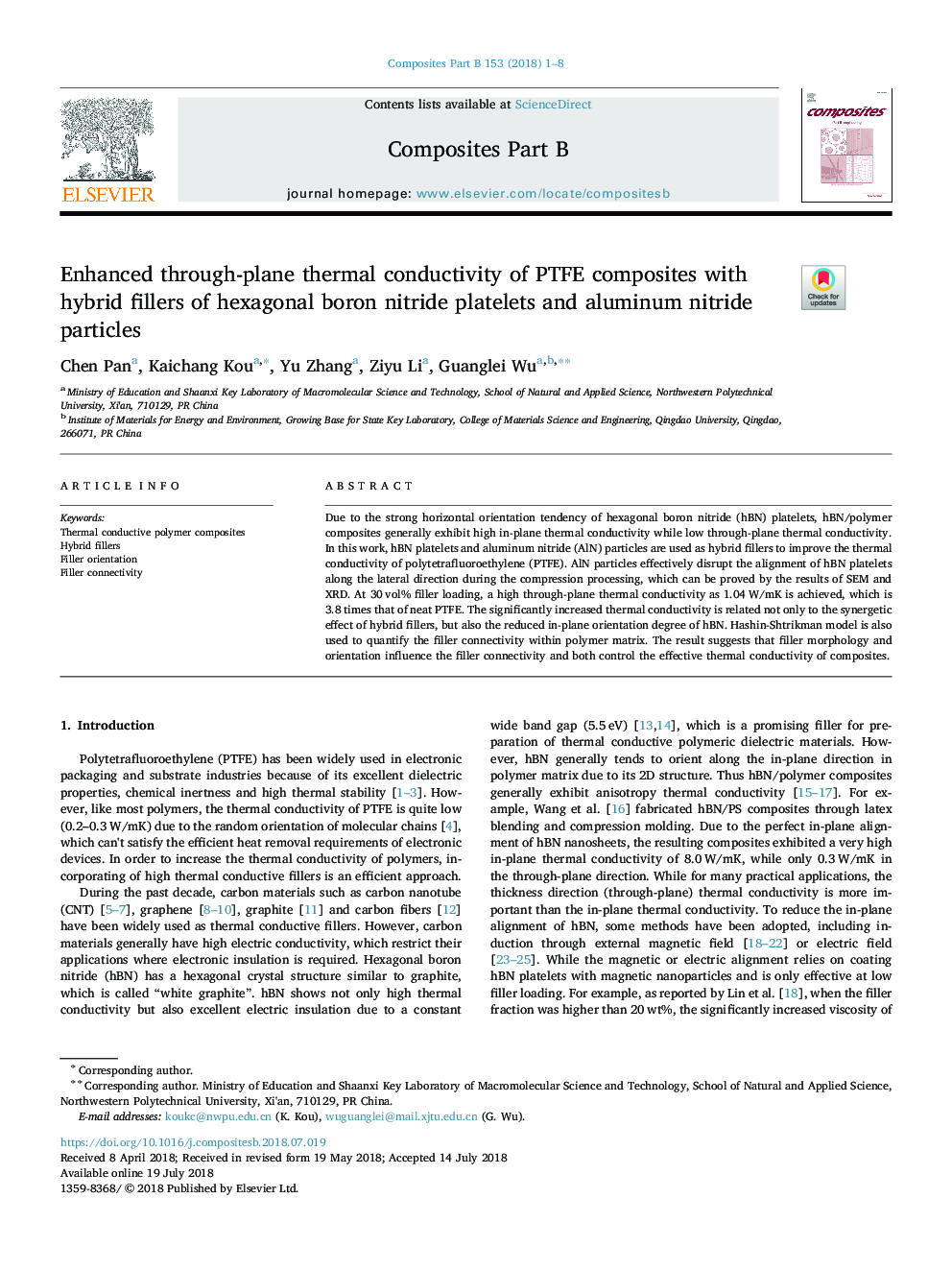| Article ID | Journal | Published Year | Pages | File Type |
|---|---|---|---|---|
| 7211751 | Composites Part B: Engineering | 2018 | 8 Pages |
Abstract
Due to the strong horizontal orientation tendency of hexagonal boron nitride (hBN) platelets, hBN/polymer composites generally exhibit high in-plane thermal conductivity while low through-plane thermal conductivity. In this work, hBN platelets and aluminum nitride (AlN) particles are used as hybrid fillers to improve the thermal conductivity of polytetrafluoroethylene (PTFE). AlN particles effectively disrupt the alignment of hBN platelets along the lateral direction during the compression processing, which can be proved by the results of SEM and XRD. At 30â¯vol% filler loading, a high through-plane thermal conductivity as 1.04â¯W/mK is achieved, which is 3.8 times that of neat PTFE. The significantly increased thermal conductivity is related not only to the synergetic effect of hybrid fillers, but also the reduced in-plane orientation degree of hBN. Hashin-Shtrikman model is also used to quantify the filler connectivity within polymer matrix. The result suggests that filler morphology and orientation influence the filler connectivity and both control the effective thermal conductivity of composites.
Keywords
Related Topics
Physical Sciences and Engineering
Engineering
Engineering (General)
Authors
Chen Pan, Kaichang Kou, Yu Zhang, Ziyu Li, Guanglei Wu,
